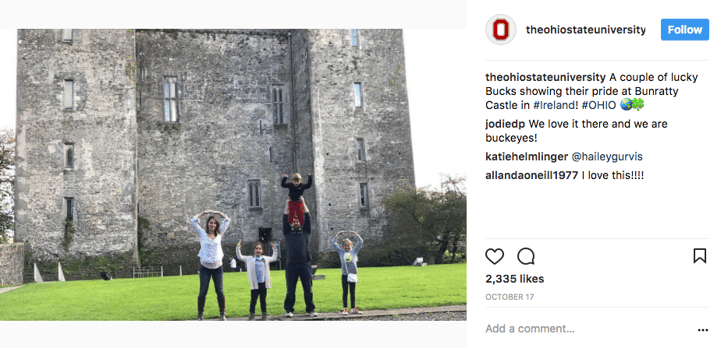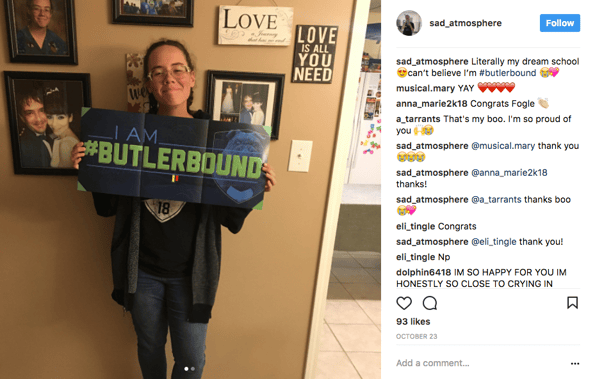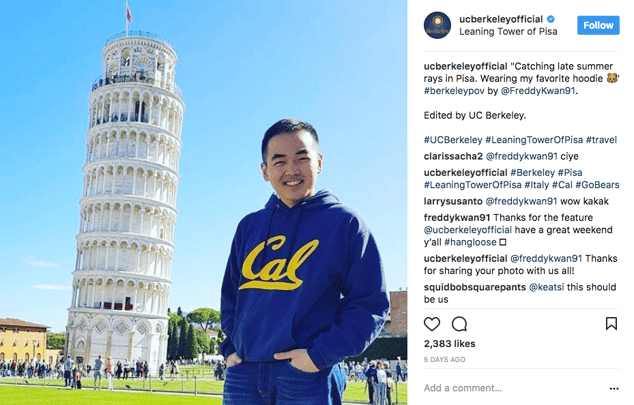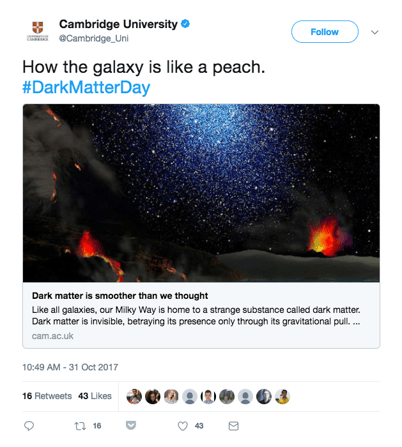For more than a decade, they’ve helped copywriters bulk up social media efforts by adding pounds to our posts.
And everyone knows they’re also great for making lame jokes.
From Day One, #hashtags have provided a super-easy way to categorize content and find interesting stuff on social platforms. For us marketers in #highered, tags are increasingly how students and alumni connect and share with our institutions — and how our institutions share with students and alumni.
But even after 10 years, there’s still a lot of misuse and room for improvement out there.
So let’s take a minute to talk about how to avoid some of the bad habits and make sure your social campaigns are working hard enough for you. With just a few simple tricks, even basic social media users can go from hashtag hobo to hashtag hero.
1) Tie your tagging to real branding goals.
A hashtag campaign should be more than an afterthought. It’s not just writing something elegant or witty preceded by a #. It’s more than jamming every post with the maximum number of characters. And it’s more than showing our friends and co-workers how delightfully #funny and #savvy we can be.
Before the posting ever starts, the smartest teams are thinking through hashtag campaigns with the same strategic logic they already devote to other marketing goals:
- What do we want to say?
- Whom do we want to reach?
- How do you want them to engage? (What do we want them to do?)
A little bit of clarity can help remind ourselves of what we’re doing and what we’re trying to achieve.
2) Choose your hashtag with intention.
If there’s one thing we’ve learned from the loveable, yet sometimes insufferable hashtag humorists in our lives, it’s this: that little # symbol can be used in a lot of different ways. Here’s a quick primer of the types of tags we encounter, and what they’re best at:
Branded Tags: Awareness-focused
After launching a new initiative, a branded tag can help build awareness for your efforts. Shown here with #BerkeleyPOV.
These are unique hashtags that — for the most part — others aren’t using on social media. That makes them ownable, which is the whole point.
Of course, it can take time for a branded hashtag to catch on, if it catches on at all. So, many social strategists enlist some support from the second kind of tag: community tags.
Community Tags: Engagement-focused
These are the ones people already use in their daily social conversations. Using community tags requires a bit or research to see what’s out there. But it’s fun to dive in — and it’s usually worth the effort. Since community tags meet people where they are, you can reach a larger number of people faster than you can with just a branded tag, which can take a while to catch on.
Start by seeking out tags that are popular with your desired audiences, and start adopting those tags to join conversations where your message may be interesting or helpful to someone.
Trending Tags: Thought-leadership-focused
Community tags drive us to ongoing daily conversations about a topic. #HigherEd, for example. But Trending Tags take us to the latest news of the hour — even the minute.
Like catching a wave, savvy higher ed teams spend time monitoring trending hashtags on Twitter and Instagram to spot opportunities where they might add something valuable to the conversation — something about their institution’s research, academic programs, or a range of other messages.
If your university has something interesting and relevant to say about a topic (and I’m betting you do), have your social team jump on it. #stat.
3) Use the perfect amount of hashtags.
Twitter: It Takes (Only Two)
It’s important to respect your elders, so we’ll talk first about the channel where all this hashtag nonsense began — Twitter.
Tweets with hashtags get nearly twice as much engagement as tweets without hashtags. But according to TrackMaven, tweets with more than 2 hashtags saw a 17% drop in engagement.
So stick with two tags. Using a ton of them on Twitter not only feels cluttered, it’s downright uncivilized. As a user, I often feel like there’s a robot trying to reach me, not a real person.
And remember, your #hilarioushashtagjoke may be fun, but it likely won’t do anything for engagement. Although I admit, it is sometimes hard to resist.
Instagram: 5 or more (but not 30)
Instagram is a different beast. Everyone is a bit more hashtag happy on Insta. Believe it or not, posts with 5 or more tags usually get double the amount of interactions as posts without any, according to TrackMaven.
#But #what #is #the #deal #with #people #using #huge #piles #of #hashtags #at #the #bottom #of #their #posts?
This shotgun approach stems from the fact that Instagram gives you 30 tags to use per post. The problem? It doesn’t deliberately target the communities or conversations you want to reach — the people who might truly be interested in your ideas. And if you’re stretching too far too often to squeeze generic hashtags into your content, you might even trigger an Instagram shadow ban.
To build your brand over the long run, the gurus mostly say you should stick to 11 or fewer tags that are relevant to the people you want to reach — including a mix of tags your audience already uses and some branded tags to generate awareness of your institution.
Putting it all together
One of my favorite examples of this comes from my Alma Mater (and SimpsonScarborough client) Ohio State. OSU kills it on Instagram. A few years ago, their team of savvy social media folks started asking followers to share O-H-I-O photos on social media using the #OHIO tag.
 This kind of smart thinking and execution made the O-H-I-O campaign a smash success. Five years on, the effort has taken on a life of its own, including an official osu.edu webpage with more than 16,500 images submitted.
This kind of smart thinking and execution made the O-H-I-O campaign a smash success. Five years on, the effort has taken on a life of its own, including an official osu.edu webpage with more than 16,500 images submitted.
To recap: It’s 2017, people. The best brand teams know there’s a lot to gain from putting hashtags to good, smart use helping students and alumni find you, and giving them something meaningful to share, like this example from our friends at Butler University:

#tag #on.













